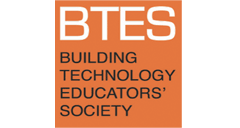The Restoration of Santa Maria delle Grazie: The New Life of an Ancient Church
Abstract
Europe is rich in monumental buildings that characterise the lives of small, medium and large communities. These elements strongly typify territories they insist on and often represent their symbols. These buildings' value is not only defined by their historical nature. Like a magnifying glass, the studies of such types of structures allow us to scrutinise arts, technologies and construction techniques. Often, intervening to restore them instead of erecting new buildings represents an opportunity for the entire community to retrace the history of master artisans and architects of distant epochs. Restoration, therefore, represents a moment of cultural deepening and enrichment of society as a whole. The case study presented in this paper is an example of this approach. In addition to the political will to return a historical monument to a small community, the restoration work created a symbiosis between ancient construction techniques and new technologies, giving the building a new life. Carrying out structural investigations on various portions of the structure after an in-depth historical study, technicians tried to investigate the story and the mechanical behaviour of materials. The masonries were reinforced with widespread interventions using the FRCM (Fiber-Reinforced Cementitious Matrix) technique. The monumental complex has numerous buttresses and arches, all reinforced with diffuse and punctual interventions to ensure their consolidation and structural improvement. Floors have been reinforced, and the roof was entirely rebuilt. In addition to the reinforcement goal, these interventions have boosted the box-like behaviour. "The Santa Maria delle Grazie" monument is also the subject of an experimental monitoring campaign that involves the use of fibre optic sensors integrated within the cement matrix to consolidate the wall faces. The building presented in this paper represents an enlightened example where technological innovations have made it possible to realise a project path catalysing effectiveness in both architectural and structural terms.
Keywords: Masonry restoration, Structural Analysis, Cultural Heritage, Structural Health Monitoring
How to Cite:
Di Gennaro, L., Frunzio, G. & Loreto, G., (2023) “The Restoration of Santa Maria delle Grazie: The New Life of an Ancient Church”, Building Technology Educators’ Society 2023(1), 163-171. doi: https://doi.org/10.7275/btes.1949
Downloads:
Download PDF
